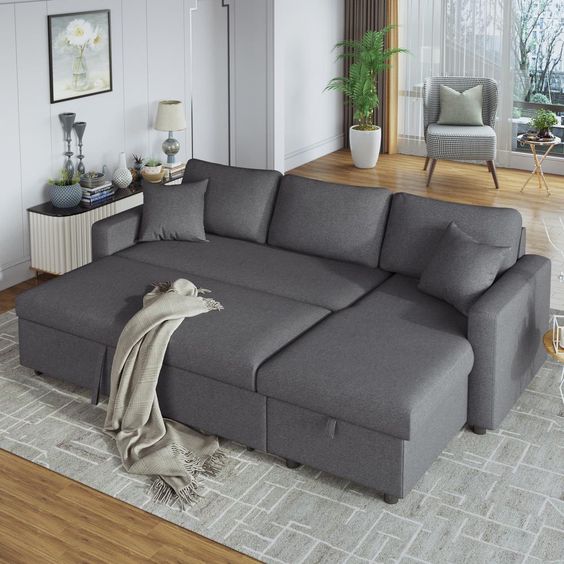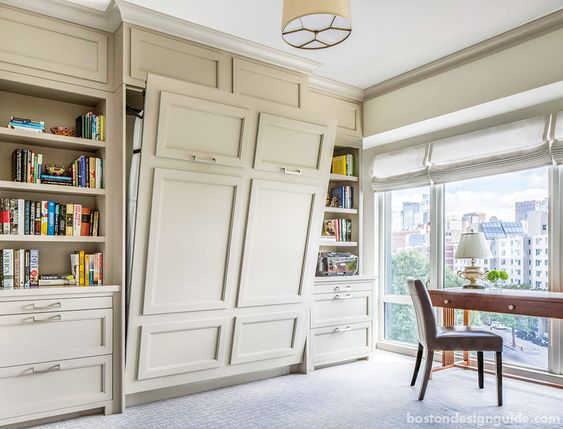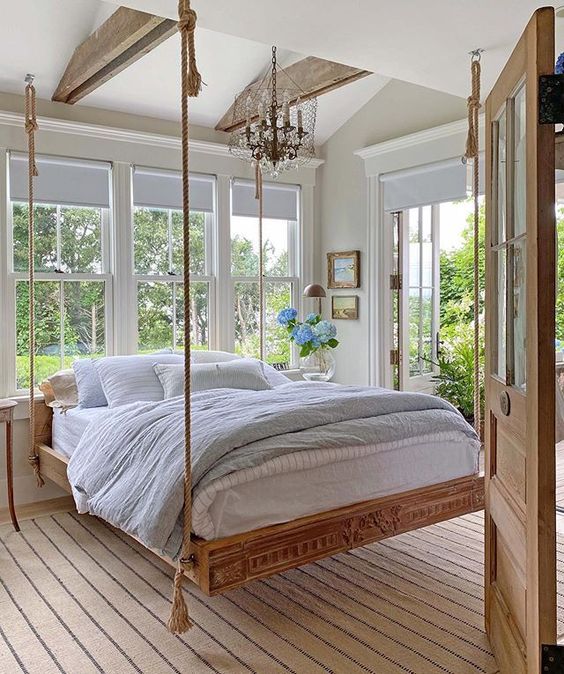Today the traditional bed is the best way to sleep, but if you find yourself having to optimize the space, what solutions can you adopt without literally losing sleep?
There are mainly 7 noteworthy alternatives to the bed, and I’ll tell you that all of them have strengths and weaknesses. The positive side of all this is that among these alternatives, there is certainly one that suits your style and that will not make you regret the traditional bed.
To help you with your choice, we have evaluated the various alternatives.
Trying to show you the strengths and weaknesses of each, hoping to help you sleep peacefully and optimize your living space.
What is the best alternative to the bed?
We tell you that there is not the best ever, but it depends on your space and your personal tastes. Below, you will find the best solutions representing a natural bed alternative.
Contents
Japanese Futon (aka Shikibuton )
Japanese, the term futon means rolled-up mattress, which is what we’re talking about.
Not to be confused with the sofa beds called ‘futons’ in the USA , in fact, the futon consists of a mat (tatami) on which the futon mattress rests (unrolls), which is generally between 2.5 and 5.5 inches high.

Pros
- Save Space: Japanese futon allows you to save bed space. Why? It’s straightforward in the morning, you roll it up, and the bed disappears, and you can use that space in another way, perhaps adding a desk to work from home.
- Great for back pain sufferers: Thanks to the position on the floor, Japanese futons are great for back pain sufferers, especially those suffering from sciatica.
- Breathable and Natural: Japanese futons are made with natural materials such as cotton or silk. This makes them very breathable.
- Silent: The Japanese futon or Shikibuton is extremely quiet. Obviously, without a frame or springs and slats that can creak or loosen, the futon remains extremely quiet, making the environment even more comfortable for sleeping.
- Economic: As with everything, you can find futons of different quality and prices; however, compared with a traditional bed of the same quality, it is much cheaper having to invest only in the mattress and the tatami and not in the entire bed structure
Cons
- Long adaptation time: It may not be immediate to get used to sleeping on the futon. Compared to a traditional bed, the futon takes you directly to the ground by changing your perspective of the room and the environment that surrounds you. You may need time to adjust to your new position and fall asleep without any problems.
- Not suitable for insect haters: If like me, you can’t stand insects, especially nocturnal ones like cockroaches and bedbugs, you might be terrified of sleeping on the ground. If they are present in your home and it is a problem for you, then the futon is not the right choice for you.
- Too cold: If in the summer months, it could be the turning point that will make you sleep peacefully. The futon may make your back too hard for your taste in the winter months. This is because they are very breathable, and the proximity to the floor will induce a thermal exchange.
- Maintenance: The futon or Shikibuton requires a lot of care. The Japanese usually beat their futon with the unique carpet beater every morning before putting it back in the closet. Unfortunately, this type of maintenance is required, especially if you suffer from dust allergies. Sleeping on a futon that is not particularly clean could create problems. The materials with which the futon is made, such as cotton, are very breathable and will absorb all your sweat during the night. This means that without adequate ventilation of the mattress and the accumulation of dust, you will also have a bad smell waiting for you in the evening.
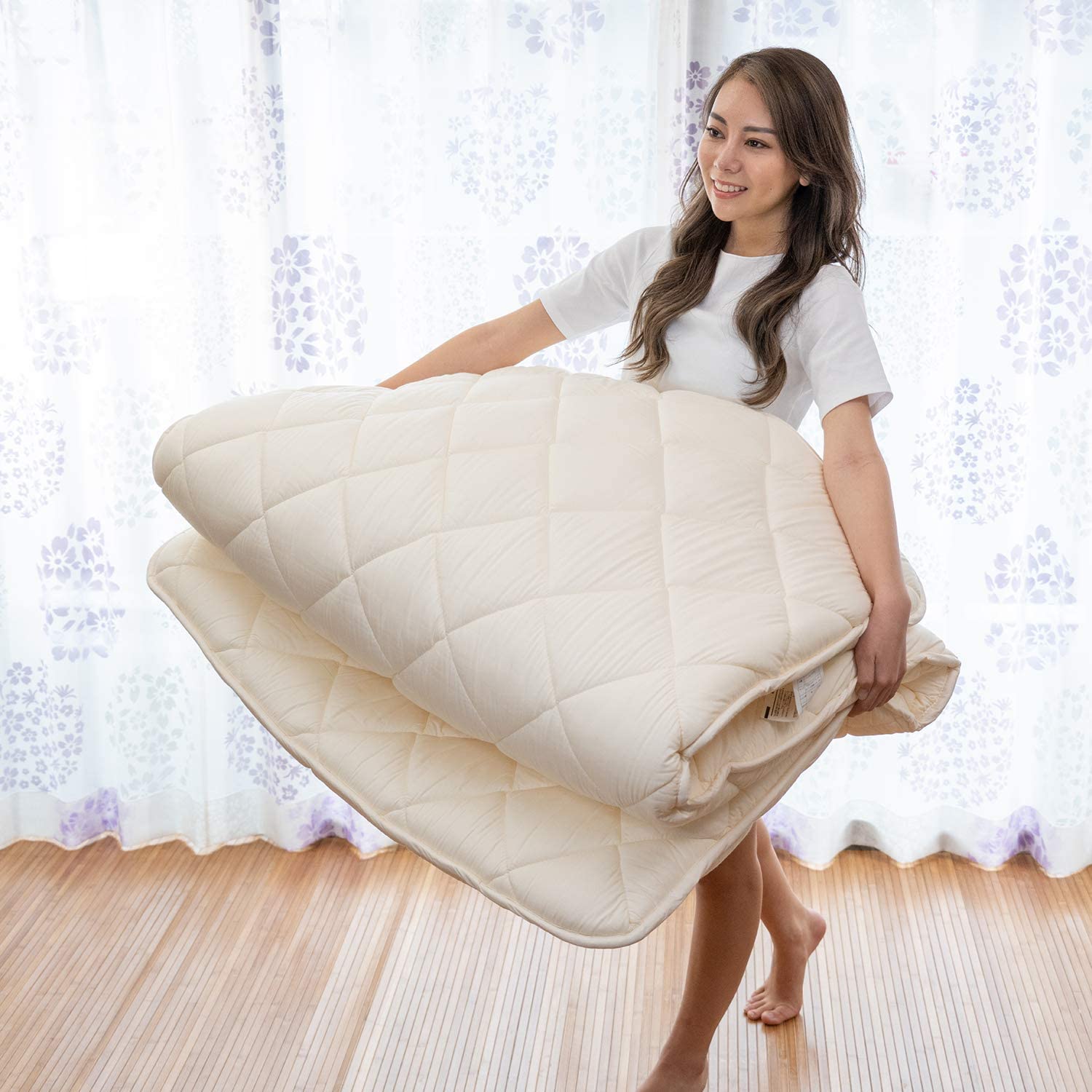
Sofa Bed
The sofa bed is undoubtedly the most popular alternative to the traditional bed.
Who among you has never felt the thrill of sleeping on the sofa? Well, that’s not what we’re talking about. The sofa bed is a sofa that contains within its structure a mattress with a pull-out system that converts your sofa into a bed in all respects.
If you need to save the bed space, perhaps inside a studio apartment, or if you want to keep a bed at hand for guests without occupying an entire room, then the sofa bed could be just the solution for you.
Pros
- 2 in 1 Solution: The sofa bed can solve two problems for you with just one object. When it is closed, it is a typical sofa, and it is a regular bed when it is open.
- Save space: when closed, it takes up the space of a standard sofa; this allows you to keep a bed in the living room without problems.
- Easy to match the style: Sofas beds have evolved over the years. Today they can be found in all sizes, materials, and colors. This means that you can match it with the design and style of your room without any problems.
Cons
- Comfort problem: if you don’t buy a high-quality sofa bed, over time, you risk feeling the springs and metal parts on your back while you sleep, and I assure you it’s not pleasant.
- Expensive: Sure, it is not as expensive as buying a sofa and bed separately, but it is undoubtedly costly compared to a traditional sofa or mattress. And if you look for quality, the cost can become very high.
- Difficult to clean: Because the mattress closes inside the structure, it is challenging to keep it ventilated, and cleaning between the gears is not always comfortable.
Hammock
In some parts of the world, sleeping in a hammock is entirely normal. Usually, it is more associated with a relaxation spot than suitable for night sleep in our area. If you typically sleep on your stomach or on your side, forget it; otherwise, you can continue reading this paragraph for the pros and cons of using the hammock as an alternative to a bed.
Pros
- Space: if you use hooks instead of structures, the area used is practically nil, and in the morning, you just need to unhook the hammock to have the room completely free.
- Versatility: Did the hammock get dirty? Oh, what will it be? You can throw it in the washing machine and take the spare one out of the drawer while it dries.
- Health: mites and bedbugs generally do not live in hammocks. Unlike mattresses, parasites are less attracted to hammocks, and cleaning a hammock is a breeze.
- Inexpensive: the hammock is exceptionally cheap, especially when hung on hooks.
Cons
- Mono position: sleeping lying down, on the side, or on your stomach is practically impossible. In the hammock, you sleep curled up.
- Mono place: forget to share the hammock. You will find that one person is already too much.
- You need agility: getting out of the hammock in the morning is not for everyone. It will start to wobble, and if you are not ready for reflexes (and as soon as you wake up, few are), you will find yourself hugging the floor.
Air Mattress
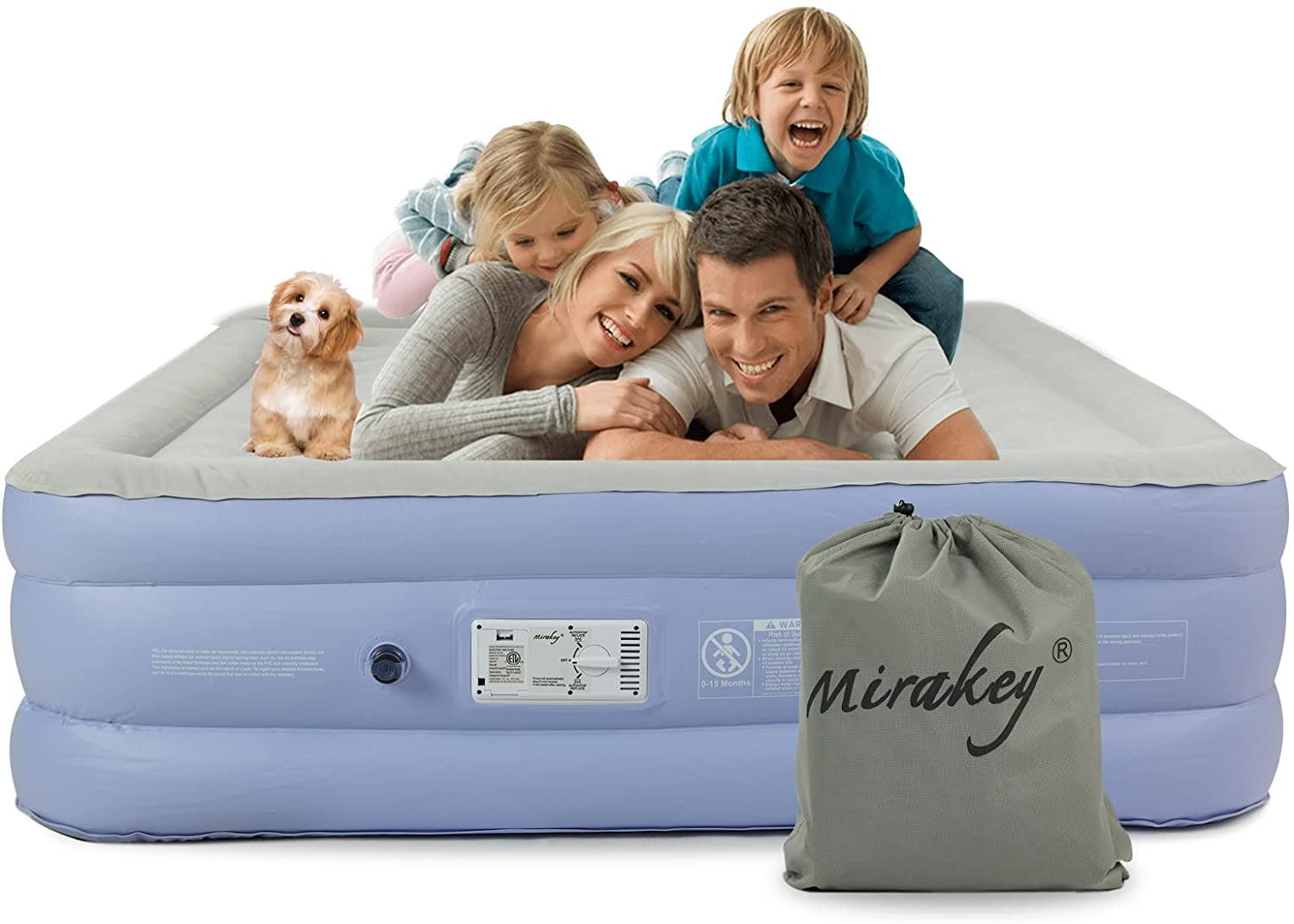
Let’s start with a great advantage of air mattresses: they are not wasted. Regardless of whether or not they may be your alternative to the bed, they always find a way to be reused. They can quickly become a bed for guests, for camping, to take with you to visit relatives, for a sleepover for your children, etc.
As versatile as you will notice shortly, the cons list is superior to the pros list, and few will be able to use it in the long run.
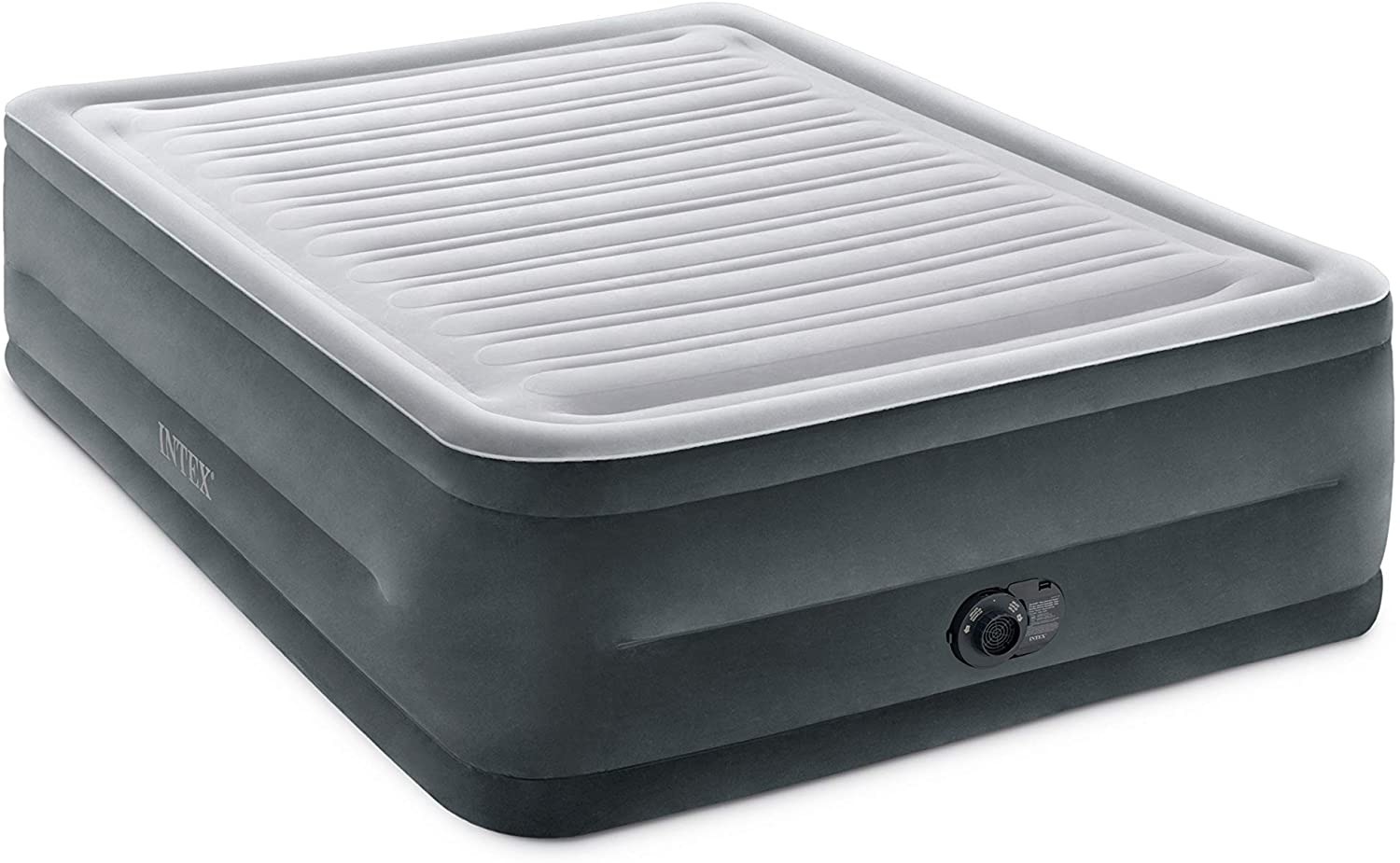
Pros
- Save Space: The air mattress can completely disappear from the room. You can deflate it entirely and put it in the drawer or deflate it in half just enough to put it back in the closet.
- Economical: air mattresses cost much less than bed + mattresses. If you also use them for other uses such as camping, it can also save you money on your sleeping bag.
Cons
- Back pain: air mattresses are not suitable for back pain sufferers, as they do not provide adequate support to your spine.
- Comfort: they are not very comfortable sleeping, especially if the mattress is not high enough. The movements are more difficult than on a normal mattress. Sleeping with your partner may not be pleasant at all; each movement transfers one movement to the other, and you will feel like you are on a roller coaster.
- Cold: the exchange with the floor is direct. So on cold nights, you will feel your back frozen, forcing you to put a duvet under you.
- Maintenance: Any inflatable object is subject to possible punctures. Always keep a patch at hand, especially if pets or children live in the house.
Murphy Bed
The Murphy bed takes its name from its inventor, William Lawrence Murphy, who invented it in the early 1900s to increase the livable space in his studio apartment in San Francisco.
Widely used in cinema for comic scenes, these types of beds have seen the limelight with the economic crisis of the last decade. Although they are an excellent solution to save space, the associated risks must also be considered.
Pros
- Save space: Murphy’s beds can be closed vertically inside the wall or wardrobe, disappearing from view and freeing up space in the room.
- Cheap: They are less expensive than traditional beds and some sofa bed models.
Cons
- Difficult to fold: they may be difficult to fold, especially for elderly or not too tall people, as the handles are often stored in the upper part of the bed.
- Mess: Your sheets and pillows can often be messed up due to how they fold into their own compartment. It is difficult to “keep the fold.”
- Dangerous: Murphy’s beds can be very dangerous (you can read the articles cited on Wikipedia for an example), absolutely to be avoided for children, but if not correctly installed, they can also be dangerous for adults.
- Longevity: the average duration of a Murphy bed is considered to be around 15/20 years, while a traditional bed can last much longer
Hanging Bed
Floating beds are the last alternative to the bed we will tell you about and one of the most recent solutions. This does not mean that it is less critical than others; on the contrary, it has significant developments and potential.
There are different floating beds; fixed solutions are hanging from the top and accessible via a ladder as if it were a mezzanine, while other types are connected to ropes with a pulley and lower by floating just above the floor. If correctly installed, they are safe, but care must still be taken, especially if children are around.
Pros
- Magical: the floating bed immediately creates a magical effect on the whole room; it seems straight out of a fairytale.
- Adjust the height: you choose which height the bed should stay at; whether you opt for a ceiling or floor solution, you can adjust the size of the ropes at will.
- Rocking effect: you will find a pleasant rocking effect like a hammock.
- Traditional mattress: you can use a conventional mattress with all the advantages of the case, such as the various choices, technologies, and sizes available.
- Easy to clean: because it is suspended, it is easy to clean under the mattress and around it.
Cons
- Weight limit: if properly installed, they are safe, but it is always advisable not to exceed the indicated weight.
- Strong walls: To be installed securely, they require strong walls that can withstand the load.
- Cost: they often have a higher price than other alternatives, either because installation usually requires the help of a professional or because the mattress is the traditional one.

